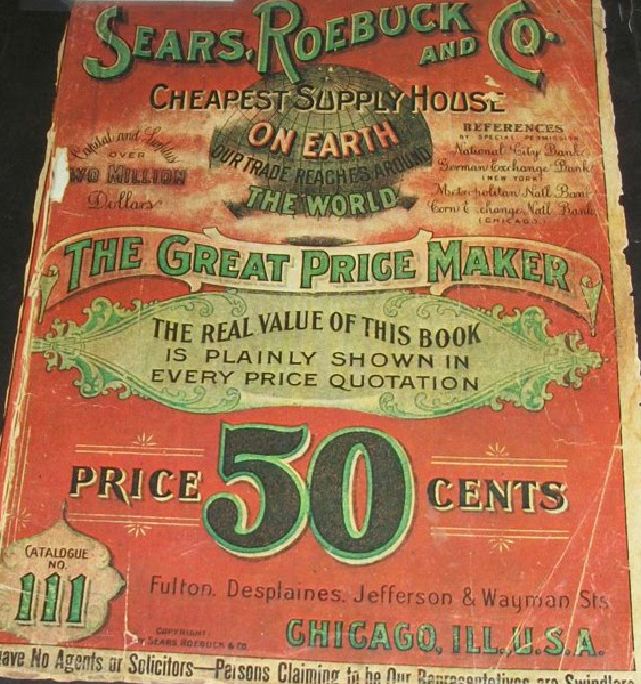
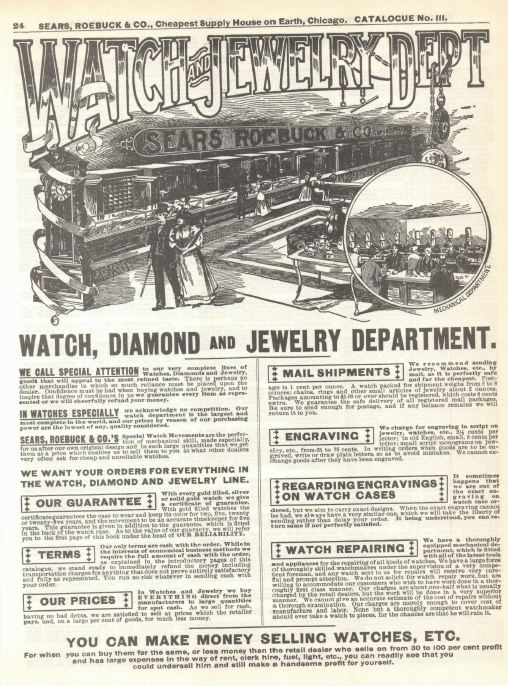
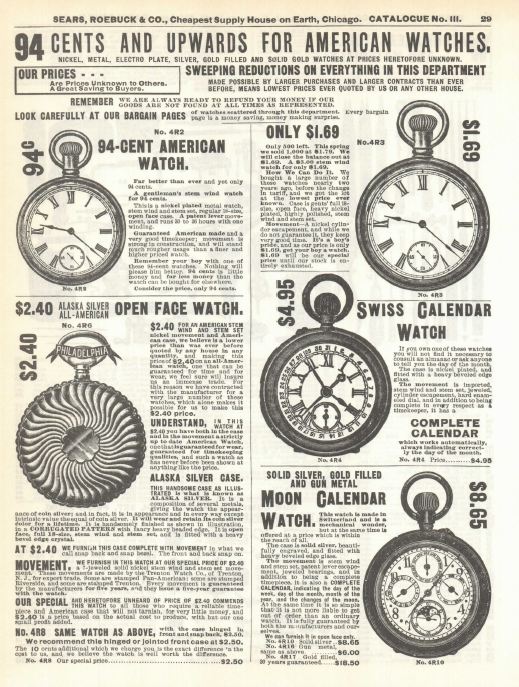
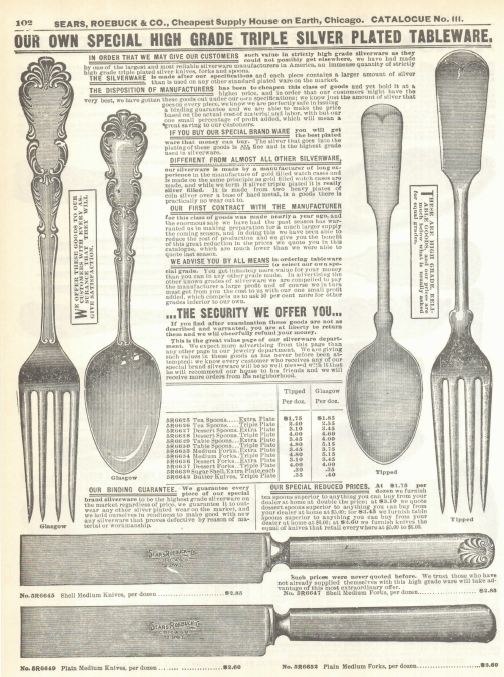
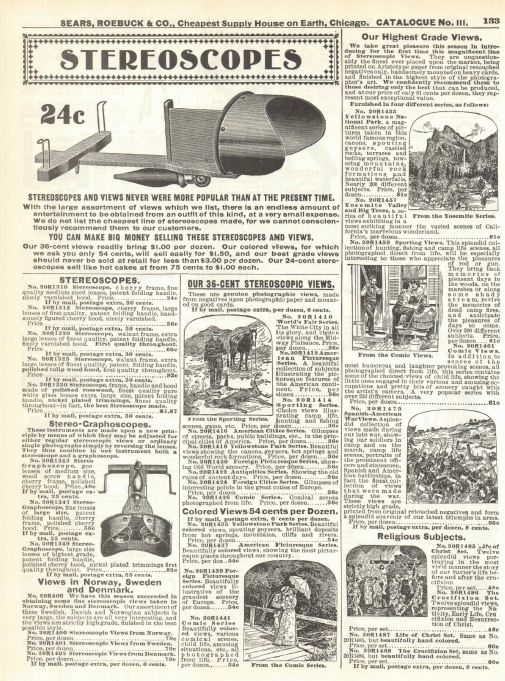
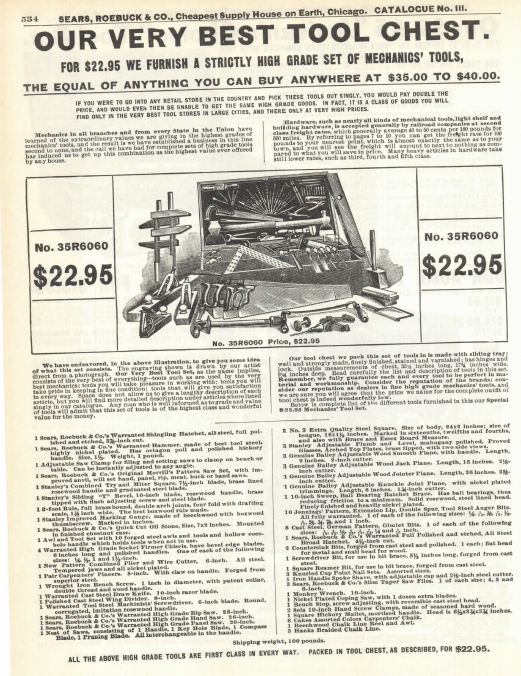
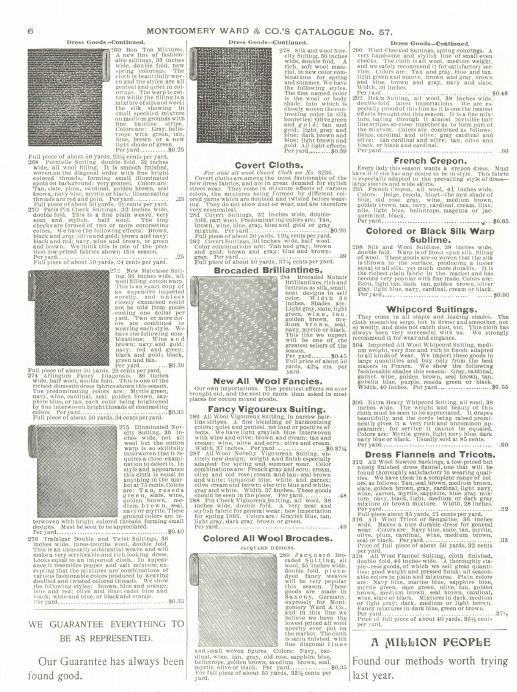
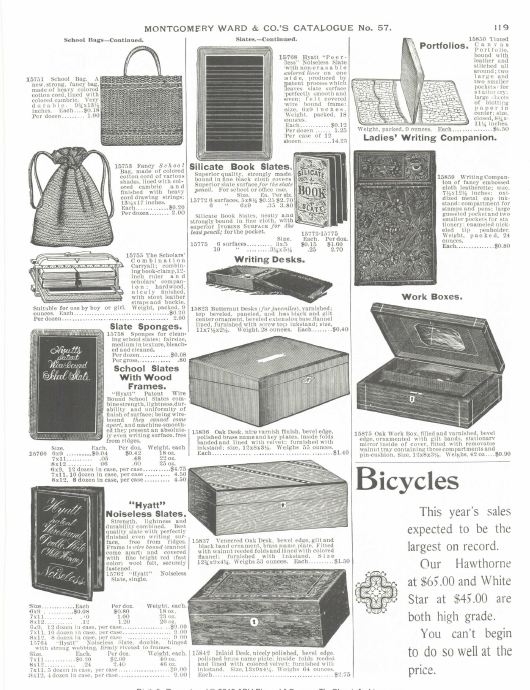
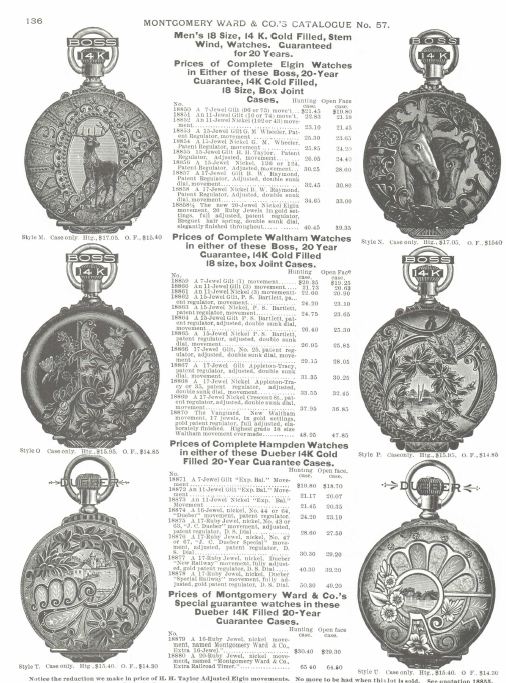 |
Montgomery Ward was founded by Aaron
Montgomery Ward in 1872. Ward had conceived of the idea of a dry goods
mail-order business in Chicago, Illinois, after several years of working
as a traveling salesman among rural customers. He observed that rural
customers often wanted "city" goods but their only access to them was
through rural retailers who had little competition and offered no
guarantee of quality. Ward also believed that by eliminating
intermediaries, he could cut costs and make a wide variety of goods
available to rural customers, who could purchase goods by mail and pick
them up at the nearest train station.
After several false starts, including the destruction of his first
inventory by the Great Chicago Fire, Ward started his business at his
first office, either in a single room at 825 North Clark Street, or in a
loft above a livery stable on Kinzie Street between Rush and State
Streets. He had two partners and used $1,600 they had raised in capital.
The first catalog in August 1872 consisted of an 8 by 12 in.
single-sheet price list, showing 163 articles for sale with ordering
instructions. Ward wrote the first catalog copy. His two partners left
the following year, but he continued the struggling business and was
joined by his future brother-in-law George Robinson Thorne.
In the first few years, the business was not well received by rural
retailers. Considering Ward a threat, they sometimes publicly burned his
catalog. Despite the opposition, however, the business grew at a fast
pace over the next several decades, fueled by demand primarily from
rural customers who were attracted by the wide selection of items
unavailable to them locally. Customers were also attracted by the
innovative and unprecedented company policy of "satisfaction guaranteed
or your money back", which Ward began using in 1875. Ward turned the
copy writing over to department heads, but he continued poring over
every detail in the catalog for accuracy.
Ward became widely popular among residents of Chicago, where he
championed the causes of the common folk over the wealthy. He was
notable for his successful fight to establish public parkland along Lake
Michigan.
In 1883, the company's catalog, which became popularly known as the
"Wish Book", had grown to 240 pages and 10,000 items. In 1896, Wards
acquired its first serious competition in the mail order business, when
Richard Warren Sears introduced his first general catalog. In 1900,
Wards had total sales of $8.7 million, compared to $10 million for
Sears, Roebuck and Co., and the two companies were to struggle for
dominance for much of the 20th century. By 1904, the company had grown
such that three million catalogs, weighing 4 pounds each, were mailed to
customers.
Before the Sears catalog, farmers typically bought supplies (often at
high prices and on credit) from local general stores with narrow
selections of goods. Prices were negotiated (by the man of the family),
and depended on the storekeeper's estimate of a customer's
creditworthiness. Sears took advantage of this by publishing catalogs
offering customers a wider selection of products at clearly stated
prices. The business grew quickly.
The first Sears catalog was published in 1888. By 1894, the Sears
catalog had grown to 322 pages, featuring sewing machines, bicycles,
sporting goods, automobiles (produced from 1905 to 1915 by Lincoln Motor
Car Works of Chicago, not related to the current Ford line), and a host
of other new items.
By 1895, the company was producing a 532-page catalog. Sales were
greater than $400,000 in 1893 and more than $750,000 two years later. By
1896, dolls, stoves and groceries had been added to the catalog.
In 1906 Sears opened its catalog plant and the Sears Merchandise
Building Tower in Chicago.[9] Also, by that time, the Sears catalog had
become known in the industry as "the Consumers' Bible". In 1933, Sears
issued the first of its famous Christmas catalogs known as the "Sears
Wishbook", a catalog featuring toys and gifts, separate from the annual
Christmas Catalog. The catalog also entered the language, particularly
of rural dwellers, as a euphemism for toilet paper. From 1908 to 1940,
the catalog even included ready-to-assemble kit houses.
Novelists and story writers often portrayed the importance of the
catalog in the emotional lives of rural folk. For children and their
parents the catalog was a "wish book" that was eagerly flipped through.
It was not a question of purchasing but of dreaming; they made up
stories about the lives of the models on the pages. The catalog was a
means of entertainment, though much of its magic wore off with the
passing of childhood.
This history filled DVD contains all
of the following catalogs. Please note that some of the larger
catalogs have had pages lost over the years. The page count shown
is the actual pages that are contained in the PDF files on the DVD.
1)
1875 Montgomery Ward Spring and Summer,
78 pages
2)
1895 Montgomery Ward Spring and Summer,
633 pages
3)
1896 Marshall Fields Catalog,
351 pages
4)
1918 Simpsons Catalog,
360 pages
5) 1897 Sears Catalog
#104,
710 pages
6)
1898 Sears Catalog #107,
1056 pages
7)
1900 Sears Electric, Gas, and Lighting Fixtures,
116 pages
8)
1901 Sears Consumers Guide,
53 pages
9)
1902 Sears Catalog #111,
703 pages
10)
1902 Sears Special Catalog of Tombstones,
70 pages
11)
1903 Sears Catalog #112,
1171 pages
12)
1908 Sears Catalog #117,
723 pages
13)
1912 Sears Catalog #124,
1248 pages
14)
1914 A Visit to Sears, Roebuck and Co,
52 pages
15)
1914 Sears Appliance Brochure and Catalog #134,
48 pages
16)
1920 Sears One house or a Hundred,
132 pages
17)
1921 Sears Honor Bilt modern homes,
139 pages
18)
1922 Sears Modern Plumbing,
40 pages
19)
1936 Sears Honor Bilt Modern Homes,
66 pages
|











